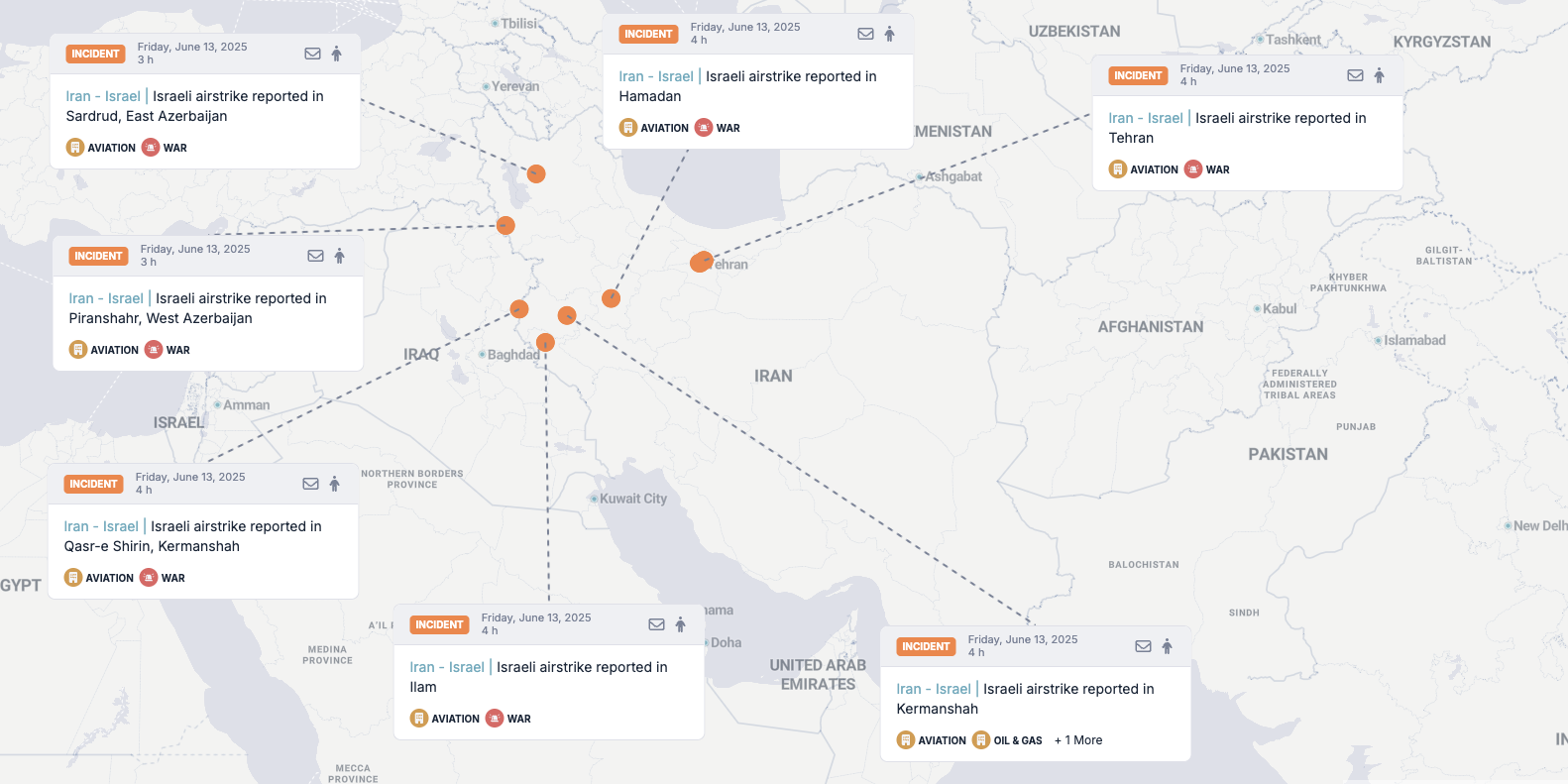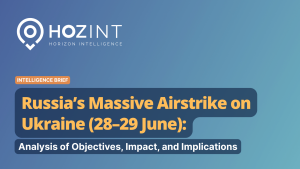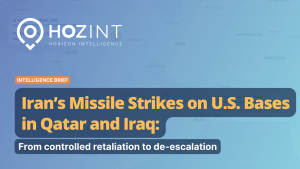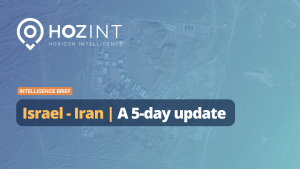Key Points:
-
Israel launched a large-scale airstrike campaign (“Operation Rising Lion”) against Iranian nuclear and military targets.
-
Targets included nuclear enrichment sites, leading scientists, and high-ranking IRGC commanders, notably killing Gen. Hossein Salami and Maj. Gen. Mohammad Bagheri.
-
Iran has vowed a harsh retaliation; its foreign ministry blamed the U.S. alongside Israel.
-
This marks a dramatic escalation in the shadow war between Israel and Iran amid ongoing conflict in Gaza.
-
Regional and global security risks have sharply increased, including potential cyberattacks, retaliatory strikes, and threats to international transport and energy infrastructure.
Incident Overview:
-
What: On 13 June 2025, Israel initiated a large-scale aerial campaign against Iran, targeting nuclear sites, high-level military leadership, and key infrastructure under “Operation Rising Lion.”
-
Who: The strikes were ordered by Israeli Prime Minister Benjamin Netanyahu; key Iranian figures killed include IRGC Commander Gen. Hossein Salami and two prominent nuclear scientists.
-
When: The airstrikes occurred on 13 June 2025.
-
Where: Strikes were reported across Iran—Tehran, Natanz, and other nuclear-related sites.
-
Why: Israel claims the operation aimed to “roll back the Iranian threat,” accusing Iran of secretly building nuclear warheads.
-
How: Using precision airstrikes and possibly missile attacks, Israel struck “dozens” of targets across Iranian territory, including residential areas.
Analysis
On 13 June 2025, Israel launched Operation Rising Lion, a unilateral military campaign involving airstrikes across Iran, specifically in Tehran, Natanz, and residential areas. The operation started at around 3 am local time and targeted Iran’s nuclear facilities, senior IRGC commanders, and nuclear scientists in what Israel described as a preemptive strike to halt Iran’s alleged development of nuclear warheads. The attack, ordered by Prime Minister Benjamin Netanyahu, was executed via precision air and missile strikes and resulted in significant casualties, including Gen. Hossein Salami and nuclear scientist Fereydoun Abbasi. Iran has vowed a “harsh and decisive” retaliation, placing the region on high alert.

Already in May, U.S. intelligence had assessed that Israel was preparing for imminent airstrikes on Iranian nuclear facilities. The assessment noted Israel was likely seeking to exploit what it viewed as a temporary window of opportunity, when Iran appeared diplomatically isolated and militarily weakened due to its commitments in Syria, Lebanon, and Yemen. Intelligence agencies observed movements of air munitions, completed aerial combat exercises, and deployments suggesting operational readiness. Some of these preparations were interpreted as strategic signalling, but others pointed to a credible strike plan in progress.
Israel’s decision to unilaterally strike deep into Iranian territory reflects an acute security calculus shaped by the ongoing Gaza war and Iran’s direct military support to Hamas. The strike, which resulted in the deaths of top IRGC commanders and key nuclear scientists, represents an escalation, directly targeting the pillars of Iran’s nuclear and military command structures.
Historically, Israel has conducted covert operations and limited strikes, such as the assassinations of Iranian nuclear scientists like Mohsen Fakhrizadeh in 2020 or cyberattacks on facilities like Natanz, but this open, wide-ranging operation is more akin to traditional warfare. The attack suggests that Israeli intelligence had detailed operational awareness of Iranian nuclear developments and viewed diplomatic deterrence as exhausted.
Netanyahu’s invocation of Israel’s survival reflects the existential lens through which Israel views a nuclear-capable Iran. Given Iran’s ballistic missile attacks on Israel during the Gaza conflict and its role as a state sponsor of proxy actors (Hezbollah, Houthis, etc.), Israel likely sees preemptive action as critical. However, the high-profile nature of the deaths, especially of Salami, makes restraint from Tehran unlikely.
Iran’s rhetoric promises a “harsh and decisive” response, and scenarios include retaliatory missile strikes via proxies (e.g., Hezbollah in Lebanon or militias in Iraq/Syria), direct missile launches, cyber warfare, or attacks on Israeli or Western targets abroad. This follows the established playbook seen after events like the 2020 assassination of Qassem Soleimani.
U.S. President Donald Trump’s ambiguous stance, claiming surprise yet reaffirming opposition to Iran acquiring a bomb, illustrates the geopolitical complexity. While the U.S. has sought to return to negotiations, this strike may derail diplomacy and entrench a cycle of violence.
A broader context includes the elevated risk of attacks in the Red Sea, where the Houthis have already targeted commercial vessels, often under the pretext of Israeli affiliation. However, their targeting has extended to ships without clear Israeli connections and, in some cases, to vessels tied to Houthi allies. If this indiscriminate pattern continues, neutral vessels may be attacked either by misidentification or deliberate provocation. As a result, major international shipping lines have indicated they will delay resuming Red Sea transit even after hostilities cease. The logistics and financial burden of re-routing from the Cape of Good Hope to Suez, only to reverse course again in case of renewed Houthi attacks, makes re-engagement economically and operationally risky. This reflects the sustained maritime insecurity that could persist even if Israel-Iran direct hostilities de-escalate.
Implications for Aviation Security
The Israeli airstrikes on Iran on 13 June 2025 have significantly altered the aviation security environment, introducing acute and multifaceted threats that demand urgent attention and strategic recalibration. As Israeli fighter jets targeted critical elements of Iran’s nuclear infrastructure and military leadership, the operational landscape for civil aviation in the Middle East shifted dramatically, setting in motion a cascade of risk factors that extend well beyond the initial theatres of conflict.
The most immediate and tangible repercussion was the closure of Israeli airspace, including all flight operations at Ben Gurion International Airport (TLV), and the disruption of air traffic over Iranian FIRs. With explosions reported in Tehran, Natanz, and across several provinces, both nations activated their air defences and declared heightened security statuses. For civil aviation, this has created a high-risk environment in the Tehran FIR and, potentially, the Mashhad FIR. These regions are now vulnerable to surface-to-air missile engagement, GPS interference, or accidental shootdowns, threats that have historical precedent, as seen in the tragic downing of Ukraine International Airlines Flight PS752 in 2020.
Israel’s Flight Information Region (FIR), though shielded by advanced air defence systems, remains vulnerable to retaliatory missile or drone attacks from Iran and its regional proxies, particularly the Houthis in Yemen. A stark demonstration of this vulnerability occurred on 4 May 2025, when a hypersonic ballistic missile launched by Houthi forces impacted near Terminal 3 of Ben Gurion International Airport in Tel Aviv. Hypersonic missiles, capable of speeds exceeding Mach 5 and equipped with manoeuvrability that complicates interception, pose a significant challenge to even the most advanced defence systems. The successful strike near a major international hub underscored a critical shift in the threat environment, revealing the growing capacity of Iran-aligned groups to bypass traditional missile defences and directly threaten vital civilian infrastructure within Israeli airspace.
The threat landscape is complicated further by the risk of escalation involving Iranian-aligned non-state actors such as Hezbollah or the Houthis, whose operational range could impact nearby Gulf States or Red Sea air routes. The eastern Mediterranean, too, could see its flight paths affected if the situation worsens. This layered and fluid risk environment now necessitates dynamic and continuous reassessment of overflight advisories, route planning, and airspace classifications.
The vulnerability of airport infrastructure in both Israel and Iran is another pressing concern. The strikes have demonstrated that not only military but also civilian targets, including residential areas, have been affected. Given the potential for Iranian counterstrikes, airports could become targets for symbolic or strategic retaliation. This includes missile or drone attacks on civilian terminals or damage from nearby military installations. Many airports in the region lack sufficient hardening to withstand such threats. The imperative now is for operators to implement enhanced perimeter security, reinforce structural defences, and conduct preparedness drills for scenarios involving missile alerts or terminal evacuations.
Beyond physical threats, the cyber dimension of aviation security has grown more salient. Both Israel and Iran possess sophisticated cyber capabilities and a history of engaging in digital attacks on critical infrastructure. Retaliatory cyber operations could target airport communications systems, air traffic control networks, or airline booking platforms. The potential for such attacks to cause widespread disruption is considerable and underscores the need for immediate audits of aviation IT systems, the implementation of robust cyber defence mechanisms, and coordinated intelligence-sharing with national cyber response units.
From an operational and economic standpoint, the conflict has already caused ripple effects. War risk insurance premiums for overflight and landings in the region are likely to rise steeply, affecting the commercial viability of certain routes. Airlines may be forced to reroute flights, increasing fuel costs and flight durations, especially on popular Europe-Asia corridors. Furthermore, crew scheduling, layover safety, and the use of regional cargo hubs must be reevaluated under the new risk paradigm. Any delays in reacting to these changes could compromise crew safety and operational continuity.
Strategically, the situation challenges the current frameworks of international aviation governance. The International Civil Aviation Organization (ICAO) will face mounting pressure to reclassify risk zones and update safety advisories. Similarly, national regulators such as the FAA and EASA are expected to issue directives restricting flights over affected areas. The political dimension is also relevant; the strikes have highlighted the fragile nature of international coordination during military crises, with the U.S. distancing itself from the operation despite its close ties to Israel. This discord raises questions about the consistency and predictability of allied support in aviation security matters.
Ultimately, the Israeli strike on Iran is likely to trigger not just a military escalation but a complex aviation security crisis. The current situation requires more than temporary fixes; it calls for a fundamental reassessment of how the aviation sector anticipates, mitigates, and responds to the intertwining threats of state conflict, cyber warfare, and proxy attacks. For aviation security stakeholders, the priority now must be to implement layered, adaptable, and intelligence-driven protective measures that address both the immediate and long-term dimensions of this evolving conflict. A critical component of this is the availability of timely, near real-time intelligence to warn operators of imminent threats. The automated monitoring of open-source platforms, particularly social media accounts of IDF officials and spokespersons, can offer valuable early warning indicators and help mitigate risk to civilian aviation operations.
Forecast:
-
Short-Term Escalation Likely: Expect retaliatory strikes on Israeli assets, especially via Hezbollah or cyber proxies. Air travel and oil infrastructure in the region could be disrupted.
-
Cyber Threats to Critical Infrastructure: Iran-linked hacktivists and APT groups will likely ramp up disruptive cyber operations targeting Israeli and possibly Western digital infrastructure.
-
Regional Spillover Risk: Given the Israeli strikes and Iranian casualties, border skirmishes involving Hezbollah are probable. A broader war in the Levant is now a credible scenario.
-
Diplomatic Fallout: Global powers, particularly the EU and UN, will push for de-escalation. However, their leverage is limited. Gulf states will likely increase security around critical infrastructure.
-
Nuclear Trajectory Unclear: If Iran accelerates its nuclear weaponisation in response, we may see further Israeli action or expanded international sanctions and covert sabotage campaigns.




